what is the attachment of a muscle to a more movable part of the skeleton called?
Describing Skeletal Muscles: A Review of Muscle Attachments And Actions
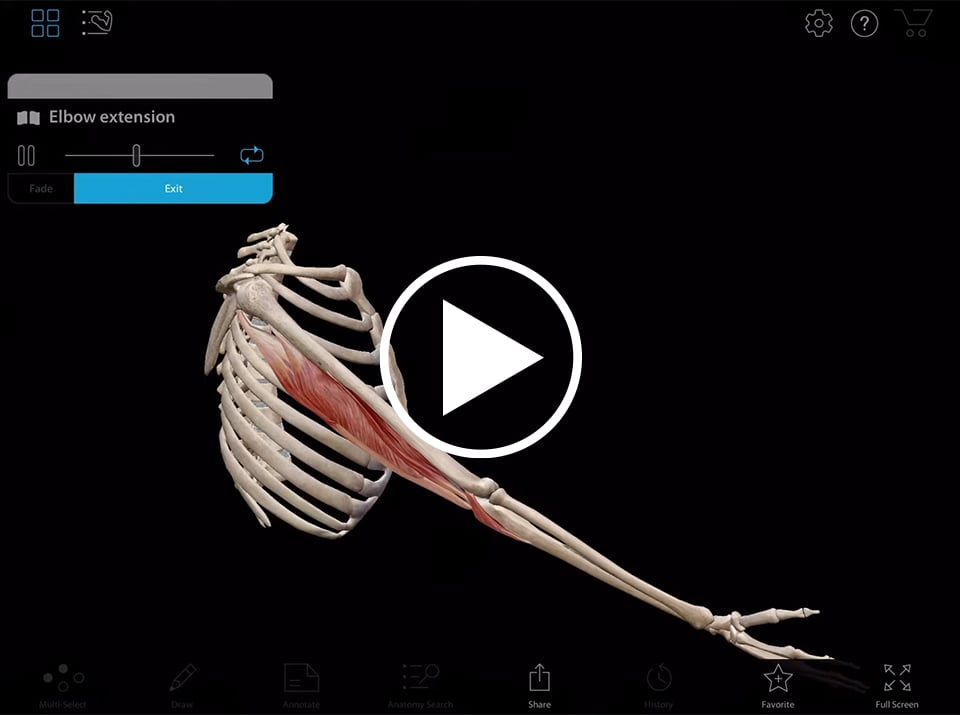
At that place are over 600 muscles in the human body. Learning the muscular arrangement oft involves memorizing details almost each muscle, like where a muscle attaches to bones and how a muscle helps move a joint. In textbooks and lectures these details near muscles are described using specialized vocabulary that is hard to understand. Here is an example: The triceps brachii has three bellies with varying origins (scapula and humerus) and one insertion (ulna). It is a prime mover of elbow extension. The anconeus acts every bit a synergist in elbow extension.
What does all that textbook jargon hateful? The triceps brachii has four places where it attaches to the scapula, humerus, and ulna. This muscle plays a big function (that's what prime mover means) in extending the elbow joint from a bent to a straight position.
Keep reading to learn what all the other muscle jargon means!
1. Muscles Attach to Basic At Locations Called Origins and Insertions
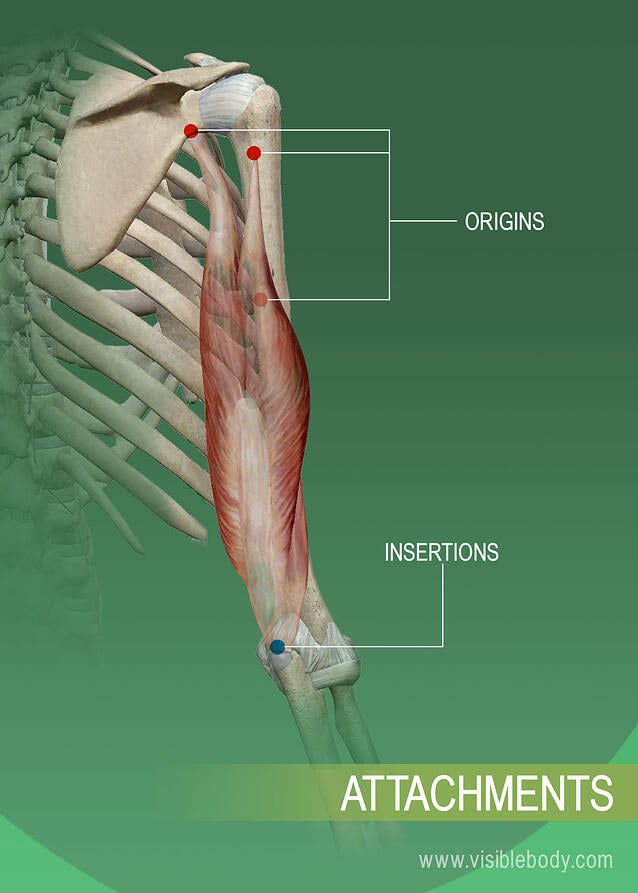
A skeletal muscle attaches to bone (or sometimes other muscles or tissues) at two or more than places. If the place is a os that remains immobile for an activity, the attachment is called an origin. If the place is on the bone that moves during the action, the attachment is chosen an insertion. The triceps brachii happens to take four points of attachment: i insertion on the ulna and three origins (ii on the humerus and one on the scapula).
two. Muscles Act on Synovial Joints to Move the Body
The muscles surrounding synovial joints are responsible for moving the body in space. These muscle deportment are often paired, like flexion and extension or abduction and adduction. Below the mutual terms are listed and divers, with animations to help you moving picture the muscles and joints in movement.
Flexion and extension are usually movements forward and backward from the body, such as nodding the head.
Flexion: decreasing the angle between two bones (bending).
Extension: increasing the bending betwixt two bones (straightening a bend).
The triceps brachii and anconeus are muscles that extend the elbow. The biceps brachii, brachialis, and brachioradialis flex the elbow.
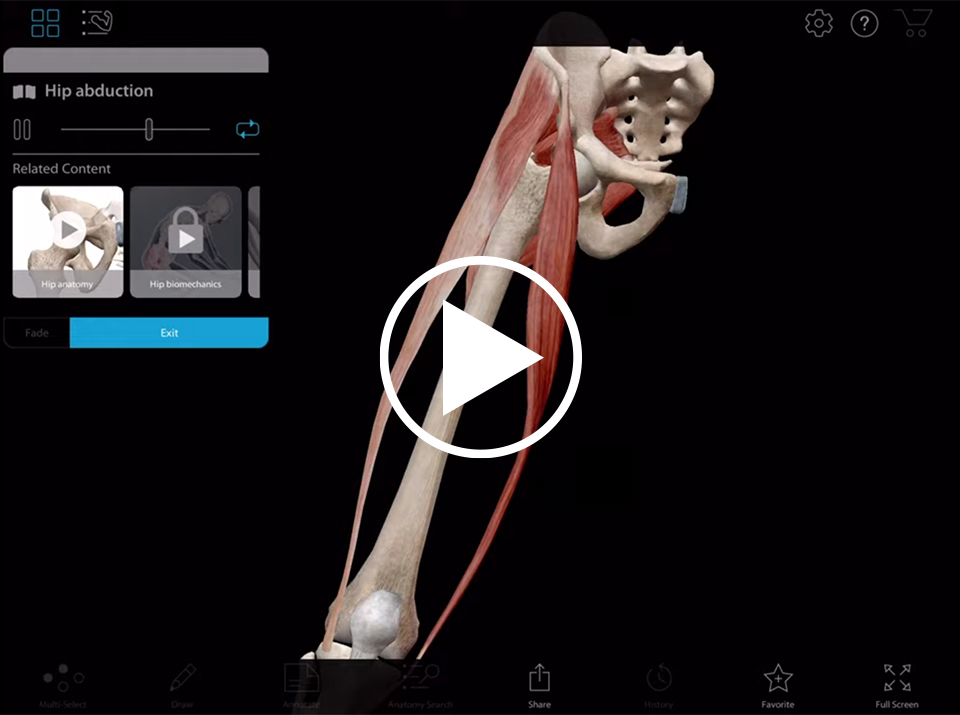
Abduction and adduction are ordinarily side-to-side movements, such every bit moving the arm laterally when doing jumping jacks.
Abduction: moving away from the body's midline.
Adduction: moving toward the body's midline.
The gluteus medius, gluteus minimus, tensor fasciae latae, and sartorius are muscles that housebreak the hip. The pectineus, adductor longus, adductor brevis, adductor magnus, and gracilis adduct the hip.
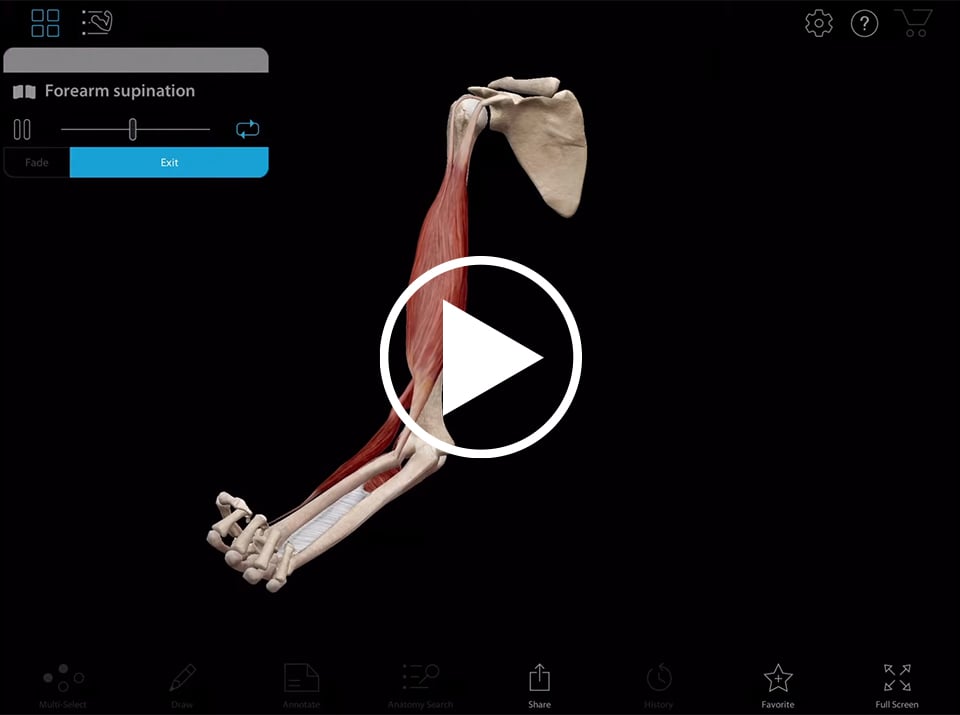
Pronation and supination
Describing the rotation of the forearm back and forth requires special terms. Spread your fingers out and look at the palms of your easily and the fingers and and then rotate your palms to expect at your nails. At present expect at your palms again. That's forearm supination and pronation.
Pronation: rotating the forearm and then the palm is facing backward or downwardly.
Supination: rotating the forearm so the palm is facing forrard or up.
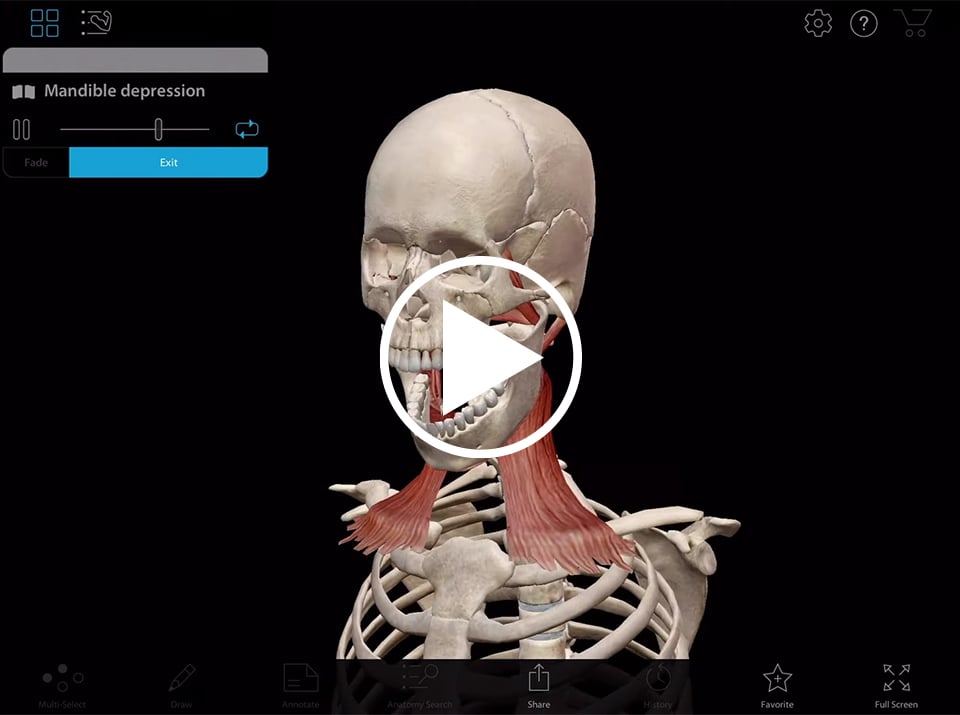
Elevation and depression are upward-and-downwards movements, such as chewing or shrugging your shoulders. When you move the mandible down to open the mouth, that's mandible depression. Move the mandible support, that's mandible elevation.
Peak: moving a body part up.
Depression: moving a torso part down.
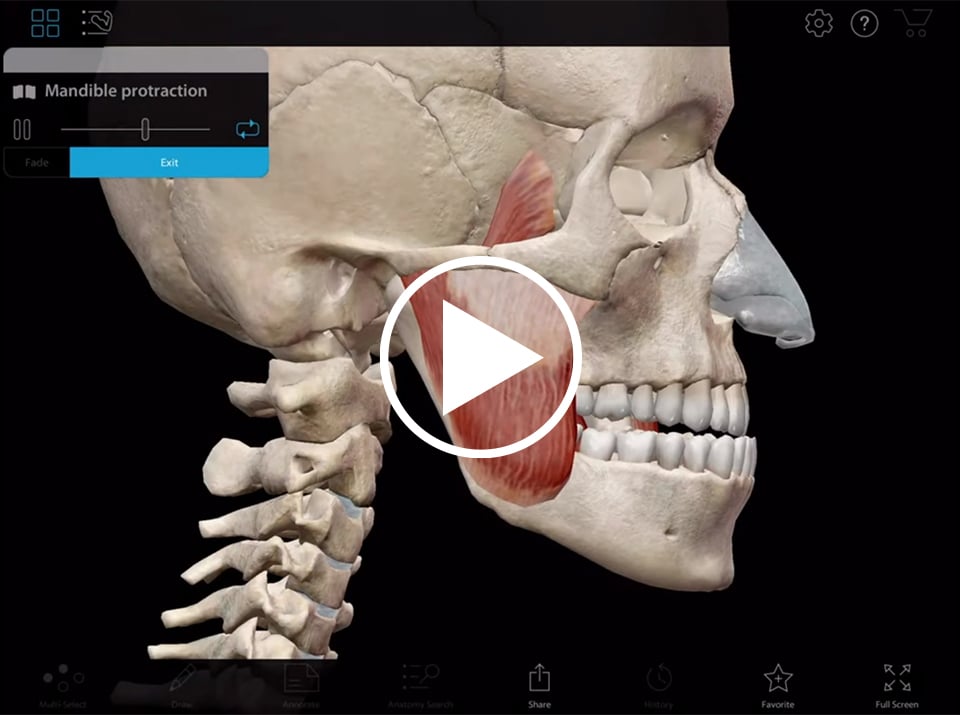
Protraction and retraction
By moving your jaw back and forth in a jutting motion, you are protracting and retracting your mandible.
Protraction: moving a bone forward without changing the angle.
Retraction: moving a bone backward without irresolute the angle.
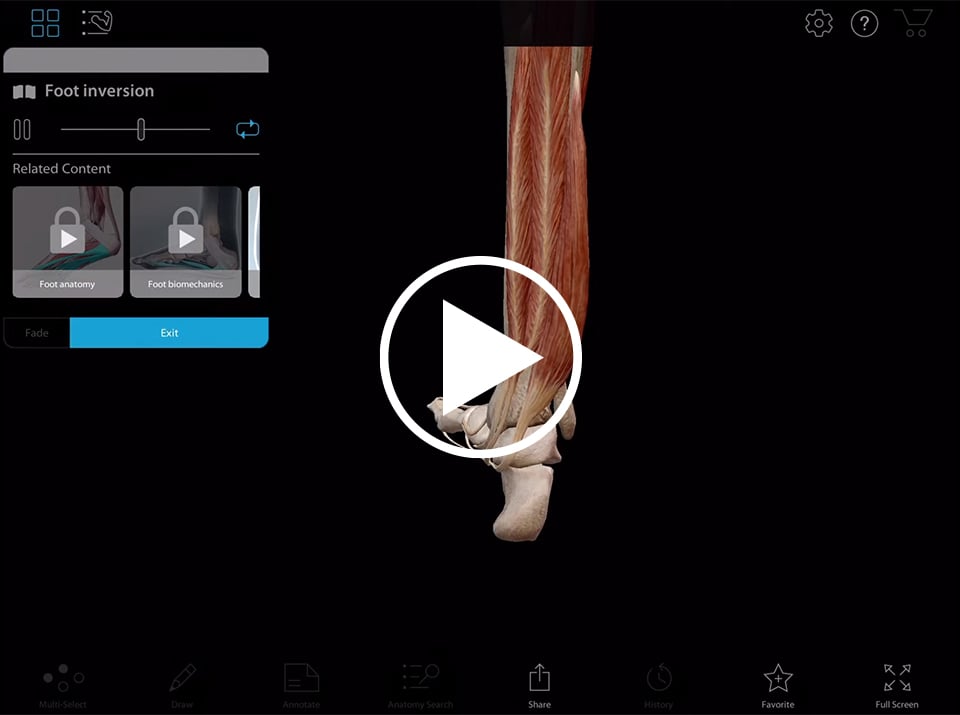
Inversion and eversion
You invert your foot when you plough it inward to see what is stuck under your shoe. You evert your human foot to put the sole of your shoe back on the floor.
Inversion: turning the sole of the foot inward.
Eversion: turning the sole of the foot outward.
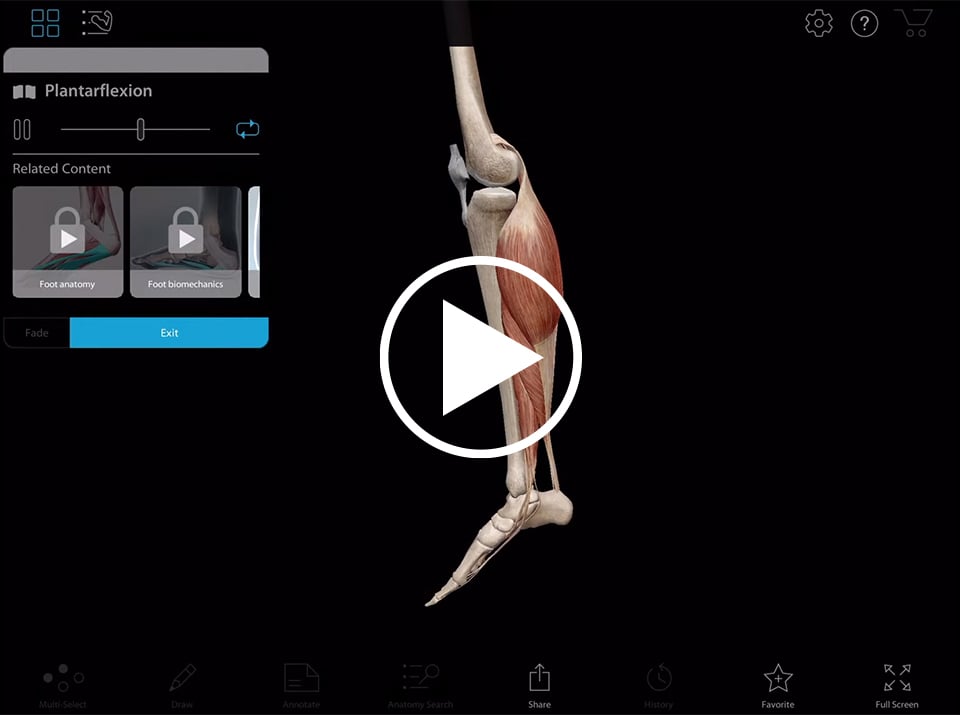
Dorsiflexion and plantar flexion Yous dorsiflex your feet to walk on your heels, and plantar flex them to tiptoe.
Dorsiflexion: bringing your foot upward toward your shin.
Plantar flexion: depressing your foot.
iii. Muscle Actions Have Prime number Movers, Synergists, Stabilizers, and Antagonists
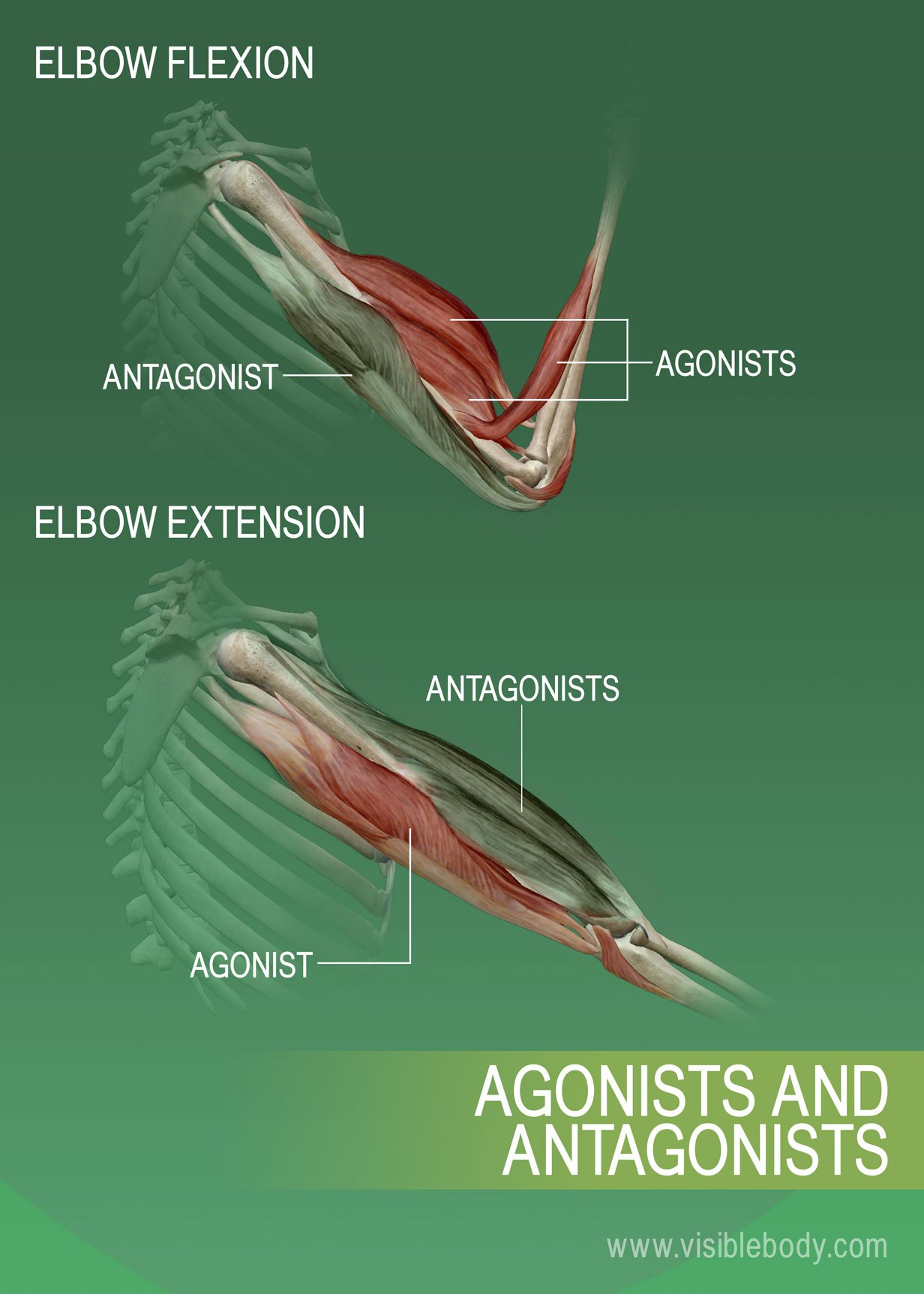
While many muscles may be involved in any given action, muscle function terminology allows you lot to rapidly understand the diverse roles different muscles play in each motion.
Prime movers and antagonist
The prime mover, sometimes called the agonist, is the muscle that provides the master force driving the activity. An adversary musculus is in opposition to a prime mover in that it provides some resistance and/or reverses a given motion. Prime movers and antagonists are frequently paired up on opposite sides of a joint, with their prime number mover/antagonist roles reversing every bit the movement changes direction.
Synergists. One or more synergists are oft involved in an action. Synergists are muscles that aid the prime mover in its role.
Stabilizers. Stabilizers human action to keep basic immobile when needed. Your dorsum muscles, for example, are stabilizers when they are keeping your posture sturdy.
Download Body Motions Lab Activity
valtierrautmacksmay.blogspot.com
Source: https://www.visiblebody.com/learn/muscular/muscle-movements
0 Response to "what is the attachment of a muscle to a more movable part of the skeleton called?"
Post a Comment